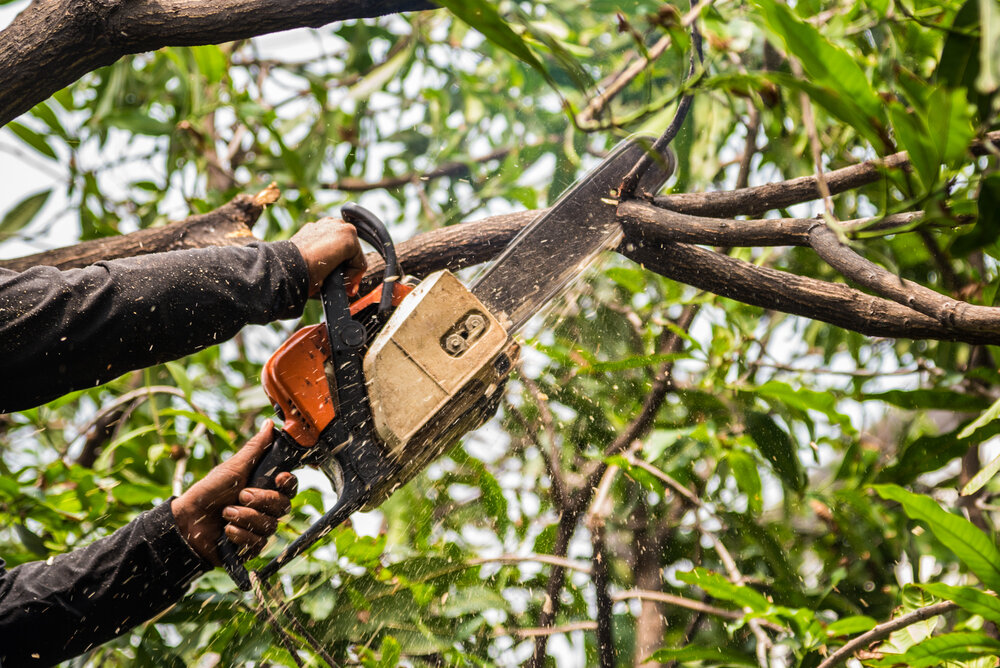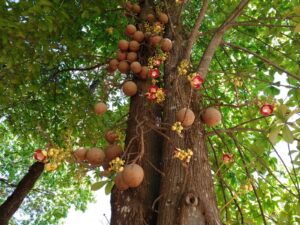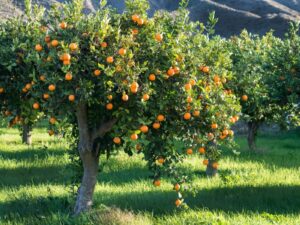How to Save a Dying Tree: Effective Tree Care Tips from Treeier
How to save a dying tree is a common concern among tree owners, and there are effective tree care tips that can help revive its health. Key areas to focus on include diagnosing tree diseases, understanding soil health, proper watering, and timely pruning to enhance recovery.”
Recognizing Signs of a Dying Tree
Identifying the signs of a dying tree is super important for keeping your yard healthy. Trees can show symptoms over time, and catching them early means you can take steps to save them.
Common Symptoms to Look For
When checking on tree health, watch out for these common signs:
- Dead Leaves: If leaves turn brown and drop early, that’s a sign of stress.
- Bark Peeling: Bark that comes off may mean there’s disease or environmental damage.
- Chlorosis: Yellow leaves usually point to nutrient issues or poor soil quality.
- Root Damage: Damaged roots can lead to problems with stability and getting nutrients.
- Storm Damage: Broken branches or wounds from storms can weaken the tree.
These signs give clues about your tree’s health and should make you want to look closer.
Early Warning Signs vs. Advanced Decline
Knowing the difference between early warning signs and more severe decline is key for taking action:
Early Warning Signs:
- Leaf discoloration
- Slow growth
- Minor twig dieback
Advanced Decline:
- Big branch loss
- Severe bark damage
- Fungal growth at the base
Healthy trees have bright leaves and strong limbs, while those in decline need urgent care due to risks from pests or diseases.
Diagnosing the Problem
To save a tree, figuring out what’s wrong is essential. This means looking into different factors affecting its health.
Identifying the Cause of Tree Issues
Common causes of tree problems include:
- Pest Infestation: Bugs like aphids or borers can seriously harm trees.
- Diseases: Fungal infections can spread quickly if not treated.
Using good pest control methods and effective disease treatments can help trees recover better.
Environmental Factors Affecting Trees
Many things in the environment can impact trees:
- Drought Effects on Trees: Not enough water leads to wilting leaves and poor growth.
- Urban Forestry Management Challenges: Pollution and tight spaces make it hard for trees in cities to thrive.
Being aware of these factors helps create better conditions for trees’ survival.
Soil Health and Nutrient Deficiencies
Soil quality matters a lot for tree health:
- Make sure your soil has enough nutrients like nitrogen, phosphorus, and potassium for trees to grow well.
Assessing Physical Damage and Disease Indicators
Look closely at physical conditions by checking for:
- Tree Wounds: Cuts from equipment or animals that expose vulnerable parts
- Root Rot: Soft roots mean decay due to too much moisture
Performing a Scratch Test for Vitality
A scratch test shows if there’s living tissue under the bark:
- Gently scrape away the outer bark using your fingernail or knife.
- Look at the color underneath; green means life while brown suggests death.
This easy method gives quick insights into your tree’s condition!
Spotting Fungal Infections and Root Rot
Fungi love moist areas; watch out for:
- Mushrooms near roots
- Weird patches on trunk surfaces
Finding these quickly helps you treat them before they spread!
Detecting Pests and Insects
Regular checks will help catch hidden threats like:
- Holes in trunks (signs of wood-boring bugs)
- Webbing made by spider mites
Common Tree Pests and Their Effects
| Pest Name | Effect |
|---|---|
| Emerald Ash Borer | Kills ash trees |
| Bark Beetles | Causes serious structural weakness |
| Fire Blight | Can kill fruit-bearing plants |
Finding them early gives you more options for treatments!
How to Identify Pest Infestations
Worried about infestations? Here’s what to do:
- Ask local arborists who know regional pests,
- Get professional help if you see widespread issues—early action saves time!
Treatment Options for Reviving Your Tree
Proper Pruning Techniques
Pruning your tree the right way can really help it bounce back, especially if you see signs of a dying tree. Good pruning reduces environmental stress and encourages new growth.
- When and How to Prune Effectively The best time to prune is late winter or early spring, just before new growth starts. Use sharp tools to make clean cuts right above a bud or where branches meet. This helps your tree grow better and reduces harm.
- Avoiding Over-Pruning Before you start, do a tree health assessment. If you prune too much, your tree could end up with dead leaves or bark peeling. Try not to remove more than 25% of the foliage at once. This keeps the balance and lets sunlight in.
Watering Strategies for Optimal Growth
Watering is key to helping trees recover from issues like drought or diseases.
- Correct Watering Methods Focus on deep watering instead of frequent shallow watering. Deep watering helps roots grow deeper into the soil, which makes them stronger and better at getting nutrients. Make sure water soaks at least 12 inches down for good moisture retention.
- Addressing Moisture Issues If your lawn drains poorly, it can cause too much water around the roots, leading to root rot. Look at factors like nearby buildings that might block rainwater. You may need to set up proper drainage to help your trees thrive.
Fertilization Tips for Better Nutrients
Fertilizing your trees provides essential nutrients they need for strong growth.
- Choosing the Right Fertilizer Numbers Knowing your soil’s nutrient levels is important when picking fertilizers (N-P-K). A balanced fertilizer with equal nitrogen (N), phosphorus (P), and potassium (K) usually works well unless tests show specific needs.
- Application Guidelines Use organic gardening practices whenever you can, like compost or slow-release fertilizers made for trees. Apply in early spring when new growth appears, following directions carefully about how much to use based on your tree’s size and age.
Enhancing Soil Health
Mulching Around Your Tree
Mulching is a key practice for keeping your trees healthy. It helps hold moisture in the soil and adds important nutrients as it breaks down. When mulching around your tree, use organic materials like wood chips or bark. This can boost tree health and growth.
Mulch has many benefits:
- Improved Soil Structure: It makes the soil better at holding air and water.
- Increased Water Retention: Mulch slows down evaporation, keeping the soil moist.
- Habitat for Wildlife: It provides a home for helpful organisms.
- Weed Suppression: Mulch blocks weeds that steal nutrients from your tree.
Best Practices for Applying Mulch
To apply mulch well:
- Keep it 6 inches away from the trunk to avoid rot.
- Use a layer that’s 2–4 inches thick for best results.
- Refresh it every year to keep it working well.
Improving Soil Quality
Good soil is crucial for strong tree growth. Checking and improving soil quality can help your tree recover and thrive.
Testing Soil pH Levels
Check your soil’s pH regularly to keep it in a good range (usually between 6.0 – 7.5). This range helps nutrients be available for your trees:
- Use a test kit at home or send samples to local agricultural services.
- Adjust the pH by adding lime if it’s too low or sulfur if it’s too high.
Adding Organic Matter
Adding compost is a great way to boost soil health:
- Nutrient Supply: Compost gives essential nutrients like nitrogen, phosphorus, and potassium.
- Better Drainage & Aeration: Well-decomposed matter helps roots grow better and water move through the soil.
By following these tips—mulching properly and improving soil quality—you’ll create a thriving environment for your trees, even when challenges arise.
Preventive Measures & Maintenance
Regular Inspections & Monitoring
Regular inspections are key to keeping your trees healthy. By doing routine check-ups, you can spot potential problems before they escalate. These assessments help monitor tree health and catch signs of a dying tree early.
- Scheduling Routine Check-Ups
It’s important to schedule maintenance for seasonal tree care. Aim for inspections at least twice a year—once in spring and once in fall. This way, you can keep an eye on local flora and make sure your trees get the care they need throughout the changing seasons. - What To Watch For During Inspections
When you check your trees, look for these common warning signs:- Bark peeling symptoms
- Wilting or discolored leaves
- Strange growth patterns
- Pests or fungi lurking around
Integrated Pest Management (IPM)
Integrated Pest Management (IPM) combines different strategies to deal with pests while protecting the environment. This approach focuses on prevention and uses natural remedies as well as chemical treatments when needed.
- Natural Remedies vs Chemical Treatments
Choosing organic gardening practices can be great for both your trees and the environment. Some natural remedies include:- Neem oil sprays
- Insecticidal soaps
- Companion planting
- Implementing IPM in Your Yard
To put IPM into action in your yard, follow these steps:- Check the condition of your plants.
- Look for any pest problems by observing closely.
- Use preventive methods like attracting beneficial insects.
- Apply targeted treatments only when necessary.
- Keep monitoring results to make adjustments if needed.
Hiring an Arborist
Saving a dying tree sometimes needs expert help. A certified arborist knows how to figure out what’s wrong with your tree. They have the skills to recommend the best treatment plans. These pros understand tree care and will ensure your trees get the right attention.
When To Call A Professional
Knowing when to reach out for help is key. Watch for these signs:
- Dead Leaves: If the leaves are brown or falling off early.
- Bark Peeling: This might mean there’s a bigger issue underneath.
- Root Rot Signs: Soft, mushy roots can show serious decay.
- Pest Problems: Pests like the emerald ash borer can harm trees fast.
If you see these problems or if your watering and pruning haven’t worked after a whole season, it’s smart to contact local arborists for help.
What Services Do Arborists Offer?
Arborists provide different services to keep trees healthy:
- Tree Health Assessments: These checkups find what’s hurting your trees.
- Disease Treatment Plans: Specific strategies to fight off tree diseases.
- Soil Quality Improvement Recommendations: Tips on how to make soil better using natural materials.
- Emergency Tree Care Services: Quick help during bad weather or emergencies that threaten tree safety.
Understanding when to call in the pros and what they can do helps you save your trees and keep your landscape strong.
Community Involvement in Tree Care
Getting involved in tree care is super important. It helps keep our trees healthy and boosts urban forestry. When people take part in local tree care, they can save dying trees and support sustainable practices. This not only helps the environment but also builds a stronger community.
Organizing Neighborhood Tree Planting Events
A great way to get neighbors involved is to plan tree planting events. These activities promote teamwork and make our area greener. Here are some tips:
- Choose Native Species: Native trees are easier to care for and help local wildlife thrive.
- Educate Participants: Teach folks about sustainable gardening and how it benefits backyard trees.
- Create Wildlife Habitats: Encourage planting that supports habitats for different animals.
These events don’t just beautify the neighborhood; they create pride in taking care of our shared green spaces.
Educational Workshops and Seminars
Hosting workshops can help homeowners learn more about tree care. Some useful topics might be:
- Tree Diseases Prevention: Show how to spot common diseases and what steps can be taken to avoid them.
- Proper Watering Techniques: Talk about watering schedules that suit different types of trees.
- Organic Gardening Practices: Discuss methods that keep chemicals away, making homes healthier.
By sharing this info, communities can raise awareness about caring for our trees.
Resources for Homeowners
Homeowners looking for help with tree maintenance have lots of resources available. Knowing when to call a professional is key to saving a dying tree or keeping one healthy.
Online Guides and Tools
The internet offers helpful tools for homeowners taking care of their trees:
- How to Save a Dying Tree: Guides provide easy steps to diagnose problems.
- Soil pH Testing Kits: These kits help check soil acidity, which is important for plant health.
- Pest Control Resources: Find out about organic pest control options designed for common garden pests.
Using these online tools helps homeowners make better choices regarding their landscapes.
Local Arborist Services and Consultations
Connecting with certified arborists is smart when expert advice is needed:
- Local arborists offer detailed assessments of tree health, showing what actions may be necessary.
- Emergency tree care services are essential during storms or sudden damage; knowing who to contact can save the day.
Working with professionals improves overall landscape management while protecting against dangers from unhealthy or damaged trees.
Advocacy for Urban Forestry Initiatives
Advocating for urban forestry initiatives matters a lot. It plays a big part in promoting sustainability in our communities. Supporting these efforts helps solve challenges related to managing greenery.
Supporting Legislation for Tree Protection
Encouraging laws that protect green spaces makes communities stronger while promoting responsible care of natural resources:
- Support laws focused on tree preservation that stop unnecessary removals during development projects.
- Promote sustainable landscaping practices that focus on long-term environmental health rather than short-term profits from land use changes.
This advocacy leads to positive environmental impacts through protected ecosystems in urban areas where nature often faces pressure from expansion.
Collaborating with Environmental Organizations
Working together with environmental organizations makes conservation efforts even stronger:
- Partner on projects aimed at restoring local ecosystems—these collaborations build greater awareness about plant health among residents.
- Join campaigns pushing for wider conservation goals, enhancing plant diversity while encouraging eco-friendly living choices across all communities.
By participating at every level—from planting events to collaborative advocacy—communities build ties while committing to responsible care of our shared green heritage!
FAQs : save a Dying Tree
- 1. How can I tell if my tree is dying?
Look for dead leaves, peeling bark, or slow growth. These are signs your tree needs attention. - 2. What should I do first when saving a dying tree?
Start by diagnosing the problem. Check for pests, diseases, and soil health. - 3. Is it necessary to prune a dying tree?
Yes, proper pruning can help remove damaged branches and encourage new growth. - 4. How often should I water my tree?
Water deeply and less frequently. This helps roots grow strong and deep. - 5. Can I use fertilizer on a sick tree?
Yes, using the right fertilizer can supply nutrients your tree needs for recovery.
Key Practices for Tree Recovery
- Tree Maintenance: Regular checks keep trees healthy.
- Tree Repair: Address damages promptly to avoid further decline.
- Landscape Aesthetics: Healthy trees enhance curb appeal.
- Tree Growth: Ensure proper care promotes strong growth.
- Sustainable Gardening: Use eco-friendly methods for better health.
- Backyard Trees: Maintain them to improve home value.
- Urban Forestry: Support local initiatives for community greenspaces.
- Diseased Trees: Identify and treat promptly to save them.
- Tree Trimming: Regular trimming helps maintain structure and health.
- Tree Fertilization: Apply fertilizers based on soil needs.
- Local Tree Care Services: Seek professionals for specialized help.
- Tree Species Care: Different species have unique requirements; research accordingly.
- Organic Tree Treatment: Choose non-toxic options when possible.
- Tree Watering Techniques: Use methods that promote deep root growth.
- Tree Root Management: Protect roots from damage during landscaping tasks.
- How to Identify Tree Problems: Look out for signs like discoloration or decay.
- Local Tree Specialists: Consult experts for specific tree issues.




